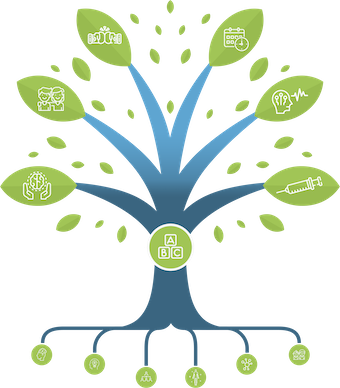How to exercise if you live with migraine
The probability is that you have been told to «exercise» by someone at some point. Maybe you read our webpage encouraging exercise for people with migraine! (See this post). But exercising is NOT easy or natural, unless you are already used to it. Every person can find their own fun and safe way to move though.
Here are some tips to help you get started:
- Start at your own level. If you are not used to exercise, start low and go slow
- Pick something that you enjoy doing
- Make exercise part of your regular routine
- Join a class or find a buddy to exercise with you
- Write down your exercise goals, track your progress and be proud
- Keep going. It will take time to see the benefits of regular exercise
- Life happens! If your routine gets interrupted, that is alright. Just start up again.
How much should I exercise?
In general, exercising 30+ minutes, 3 or more days per week is optimal. If needed, break exercise sessions into smaller segments, such as 10 minutes 3 times per day. It all adds up! Lack of time may seem to be the issue, but often it’s also a matter of «just doing it, even a little» when it’s so easy to push it to the next day.
Is this really aerobic exercise? Watch your breathing!
Shopping, going from one place to another, and climbing a flight of stairs are all great opportunities to move, but they are still activities of the day, not exercise. For most people, aerobic exercise intensity should be moderate. Monitoring your ability to speak can help you gage your intensity.
- If you can carry on a normal conversation, your intensity is too low. You need to pick up the pace.
- If your speech pattern is broken up by the need to take big breaths, your intensity is moderate. You’re on target!
- If you cannot speak without running out of breath, your intensity is excessive. Slow down a bit.
Watch out for positional triggers for migraine
For some people, certain movements of the head, neck and shoulders trigger migraine. These are called “positional triggers.” If this happens to you, avoid contact sports and exercises with positional triggers. You will need to find an exercise that you like that does not trigger your migraines. Strengthening the back and abdominal muscles will help your cervical spine in the long-term. Gently stretch your neck before and after exercise.
Adapt your intensity to how you feel that day
Have different routines available. If you had a bad day and feel tired, try a gentler session. Have a more energetic option for days when you feel better.
Exercise is not only going to the gym
If a gym membership doesn’t work for you, remember that you can train at home. There are many free You Tube channels offering activities at different levels. Just set up a little space, get a mat, and get started! It may take a bit more discipline, but you will save time and gain flexibility in your schedule.
Are there types of activities that are easier for beginners to try?
If you are not used to exercise, it’s important to choose activities where you can control the intensity. Ideas include going for walks, tai chi, Pilates, stationary bike, swimming, light weight training. Yoga is sometimes recommended, but has to be learned with appropriate supervision as some postures may require a lot of strength and technique. Avoid intense activities (like crossfit) or activities with a risk of falls, contact and concussion.
When is the best time to exercise?
The best time is the one that fits your schedule. Some people are early birds and some enjoy evening classes. Regular exercise is a key element of a good sleep, but exercise later in the day may be stimulating and lead to difficulty falling asleep. If this happens, move the exercise session earlier in the day. Consider the possibility of being active during lunch time.
Exercise is fun!
The best exercise is one that you enjoy and will be happy to do on a regular basis. Try new things until you find one or many exercises that you enjoy. Moving your body will bring you so many benefits that after a while…you won’t want to stop.
REFERENCES
Koseoglu E, Yetkin MF, Ugur F, Bilgen M. The role of exercise in migraine treatment short title: exercise in migraine. J Sports Med Phys Fitness. 2014.
Post#706
Categories
THE MIGRAINE TREE
- BRANCHES
- ACUTE TREATMENTS
- DEVICES AND NEUROMULATIOIN
- PREVENTIVE TREATMENTS
- PROCEDURES AND INJECTIONS
- SELF-CARE AND LIFESTYLE
- SOCIAL LIFE
- TRUNK
- ROOTS
OTHER CATEGORIES




